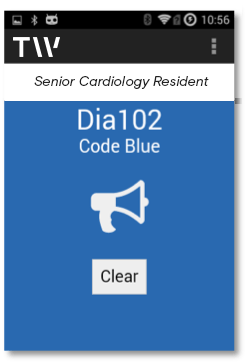The IoT market is getting crowded, but Toronto-based ThoughtWire is confident that its got a finger on the industry’s pulse, and its latest suite of applications is setting them apart from the competition, says Michael Monteith, the company’s CEO.
“If you look at the evolution of IoT, it started off with the hypothesis that machine-to-machine communications would improve operations, but that didn’t really translate. It was an insurmountable problem – everything needs to understand the information intent of everything else and that was too big of a hill, ” Monteith told CDN. “I think what most companies are focused on now is large-scale ingestion of the data and layering an analytics pile on top of it. While the data might be there, because it’s not useful to the day-to-day work of people, it’s not expressing enough value. So from day one we felt there was more than enough signals from data in any environment that one could transform the day in the life of people.”
Last year, 451 Research, a tech industry analyst firm, released a report that surveyed nearly 1,000 enterprise IT buyers worldwide. Unsurprisingly, more than 70 per cent of them said their employers were gathering data for IoT projects. There were 8.4 billion IoT devices used in 2017, according to Gartner. That number is expected to hit 75 billion by 2025. Security, however, remains a concern, with 50 per cent of respondents citing it as the top impediment to IoT deployments, followed closely by a lack of perceived return on investment at 41 per cent.
ThoughtWire’s solution to the ROI problem is straightforward – use the data collected to raise the awareness levels around internal operations and positively impact the day-to-day activities of the worker.

A notification for a code blue through ThoughtWire’s EarlyWarning app.
The collection of those signals first culminated into the platform known as Ambiant, developed to connect and orchestrate people, data and devices in real time. It quickly caught the attention of smart buildings and hospitals, and with some help from federal funding, the company quickly grew from a staff of six to more than 50. Now it’s looking to make even bigger waves in the IoT market with its latest suite of applications released last week – two built specifically for smart buildings, the other three for smart hospitals.
The smart building applications include PrecisionHub for building and facility managers – allowing them to monitor energy usage, fault detection, and automated adjustment of building controls – and the @WorkApp for tenants. The app lets tenants adjust environmental or comfort controls through their smartphones.
On the smart hospital side, ThoughtWire launched EarlyWarning, SynchronizedOps and RapidResponse. EarlyWarning uses an algorithm to help hospital staff anticipate which patients may be at risk for code blue – a hospital code used to notify staff about a patient that needs immediate resuscitation – in addition to other alerts. According to ThoughtWire, the app has helped reduce code blues by up to 90 per cent. SynchronizedOps is focused on improving information visibility that ties together operational activities. Although he wasn’t able to specify which hospital it was, Monteith says a Toronto hospital was able to save $2.7 million with the help of SynchronizedOps, resulting in a 900 per cent annual return on investment. And lastly, RapidResponse is software that helps hospital staff respond to patient requests, mechanical issues and other events in real-time.
Monteith says some of the “secret sauce” behind ThoughtWire’s success, specifically among smart hospitals, has been their technologies’ agnostic nature and ability to play with with older communication networks such as BACnet.
“It makes it easier for us to go into an environment, and make the exercise more about where the information is, and less about what systems they have and what vendors they’ve partnered with historically,” he says.
Strong partner community helping business grow
ThoughtWire’s partner community has grown quickly since 2009, contributing significantly to the company’s overall success.
Monteith says in Canada, ThoughtWire has gone to market with IBM Canada. When it comes to North America, Hitachi Vantara, a branch of Hitachi focusing specifically on IoT, has been their go-to partner.
“It’s been a relationship that’s continued to grow over the past four years,” says Monteith, adding Hitachi’s strong channel relationships in North America and beyond are key to ThoughtWire’s continued growth.
When asked what separates them from established players such as Schneider Electric, which is aggressively pushing into the IoT market and has more than 45 per cent of its revenue coming from IoT products, Sandy Mangat, ThoughtWire’s product marketing director, was quick to point out that they don’t stop at helping a customer collect information from connected devices.
“Others are often more focused on the reliability of their assets as opposed to looking at the entire power plant as an asset,” she says. “That doesn’t take in to consideration the end-to-end operational value chain that includes how people interact with those assets and the processes.”
Monteith agrees.
“The work that Schneider and other companies in the IoT space is very important,” he says. “And they’re also very good at telling people about the things that are happening in their space. But we don’t stop there. We manage the distribution of work to the right people, and we’re very focused on ensuring the complete operational response is achieved.”



